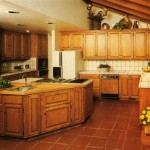Can You Gel Stain Kitchen Cabinets?
Gel stain offers a unique approach to refinishing kitchen cabinets, presenting both advantages and disadvantages compared to traditional stains. Understanding these characteristics is crucial for determining whether gel stain is the right choice for a specific project.
Traditional stains are thin and penetrate the wood, coloring the wood fibers directly. Gel stain, however, sits on top of the wood surface, forming a pigmented layer. This fundamental difference dictates how gel stain interacts with various surfaces and how it should be applied.
One of the primary benefits of gel stain is its versatility. Unlike traditional stains, which are best suited for raw, unfinished wood, gel stain adheres effectively to various surfaces, including previously finished cabinets, laminate, and even metal. This makes gel stain a viable option for refinishing projects where stripping the existing finish may be impractical or undesirable.
The thicker consistency of gel stain also contributes to its ease of application, especially on vertical surfaces like cabinet doors. It is less likely to drip or run compared to traditional stains, offering more control during the application process. This characteristic can be particularly advantageous for individuals with less experience in wood finishing.
Furthermore, gel stain provides excellent coverage, often requiring fewer coats than traditional stains, particularly on darker woods or existing finishes. This can save time and effort during the project, making it a more efficient option for some.
Gel stain is also known for its ability to provide a more consistent color, even on woods with uneven porosity. Since it sits on the surface rather than penetrating the wood, it is less susceptible to the blotchiness that can sometimes occur with traditional stains, especially on woods like pine or maple.
Despite these advantages, gel stain also presents certain limitations. Due to its surface application, it does not enhance the wood grain in the same way that a traditional stain does. While some gel stains are formulated to mimic the look of wood grain, they cannot fully replicate the depth and richness achieved with a penetrating stain on raw wood.
The thicker film created by gel stain can also make it more susceptible to chipping or peeling if not properly applied and protected. Proper surface preparation and the application of a durable topcoat are crucial for ensuring the longevity of a gel stain finish.
Another consideration is the drying time. Gel stains typically take longer to dry than traditional stains, which can prolong the project timeline. Careful planning and adherence to the manufacturer's recommended drying times are essential for achieving a smooth, even finish.
The surface finish achieved with gel stain can also differ from that of traditional stains. Gel stains often result in a slightly more plasticky or opaque appearance compared to the natural look of a penetrating stain. This characteristic may be desirable for some projects, but it's important to be aware of this difference when choosing a finish.
Proper surface preparation is critical for successful gel stain application. Cleaning the cabinets thoroughly to remove grease, dirt, and grime is essential for ensuring proper adhesion. Lightly sanding the surface can further improve adhesion and create a smoother finish.
When applying gel stain, using a brush designed for thicker coatings, such as a foam brush or a synthetic bristle brush, can help achieve a smooth, even application. Applying thin coats and allowing each coat to dry completely before applying the next is crucial for preventing drips, runs, and a gummy finish.
After the final coat of gel stain has dried, applying a protective topcoat is vital for ensuring the durability and longevity of the finish. A clear polyurethane topcoat is commonly used, providing resistance to scratches, moisture, and other wear and tear.
Choosing between gel stain and traditional stain depends on the specific project requirements and desired outcome. For projects involving previously finished surfaces, laminate, or metal, gel stain offers a viable option. For projects where enhancing the natural wood grain is a priority, traditional stain remains the preferred choice.
Understanding the characteristics of gel stain and the proper application techniques is crucial for achieving a successful and long-lasting finish. Careful consideration of the project requirements and desired outcome will guide the decision-making process and ensure a satisfactory result.

Gel Staining Kitchen Cabinets 6 Month Review Merrypad

10 Best Gel Stain Tips For Beginners Budgeting Bliss

Gel Stain Kitchen Cabinets Without Sanding Fast Easy Diy

How To Gel Stain Cabinets Printable She Buys He Builds

Java Gel Stain Kitchen Transformation General Finishes Design Center

Pickled Oak Bathroom Vanity Before And After Gel Stain Staining Cabinets Kitchen Makeover Wood

Gel Stain 101 When And How To Use It Bob Vila

Gel Staining Kitchen Cabinets 6 Month Review Merrypad

How To Paint Cabinets With Java Gel Stain My Homier Home

Gel Stain Cabinets How To Use The Best For Diy Projects
Related Posts








